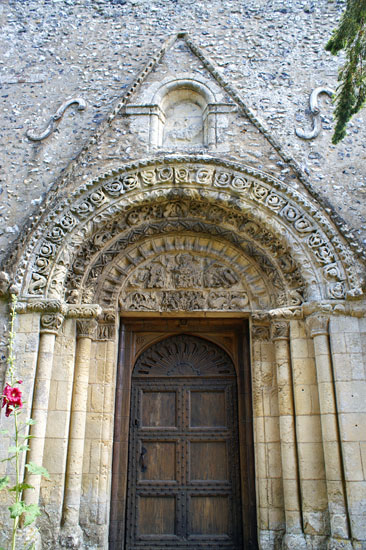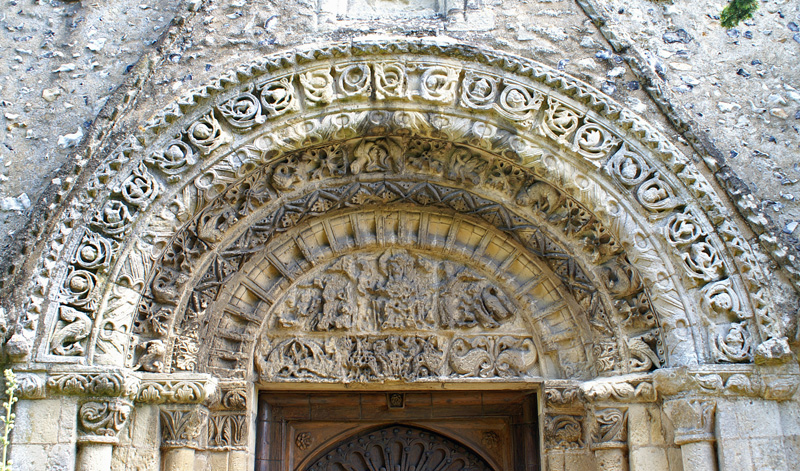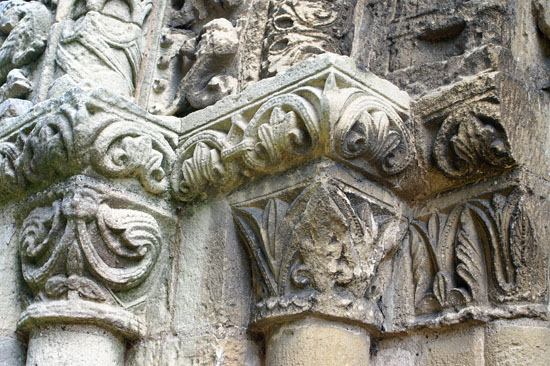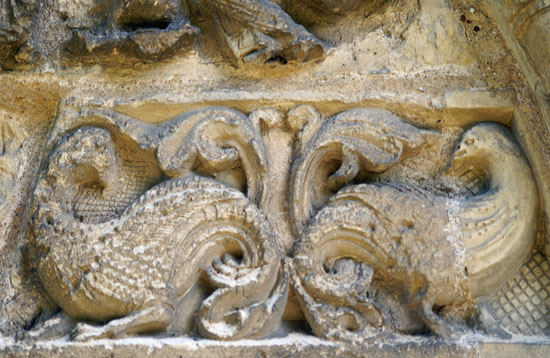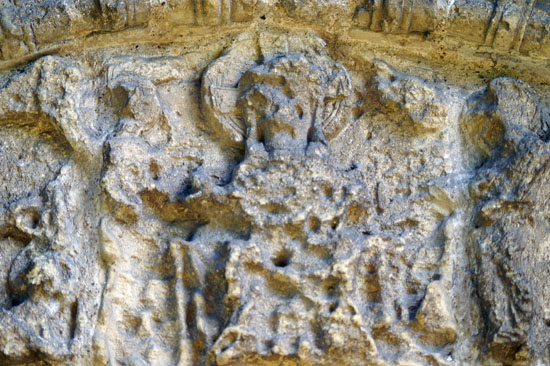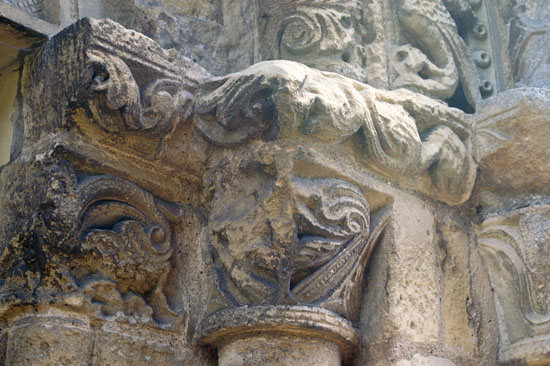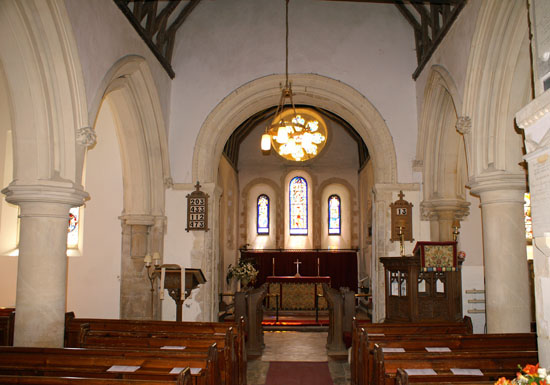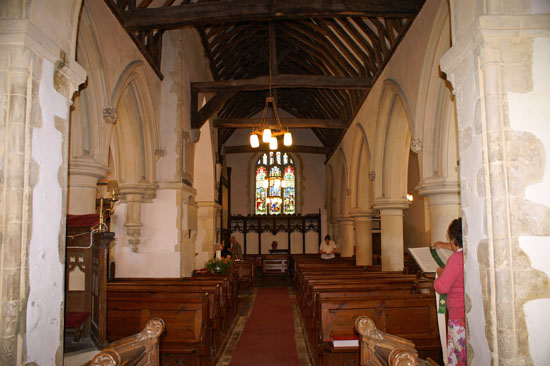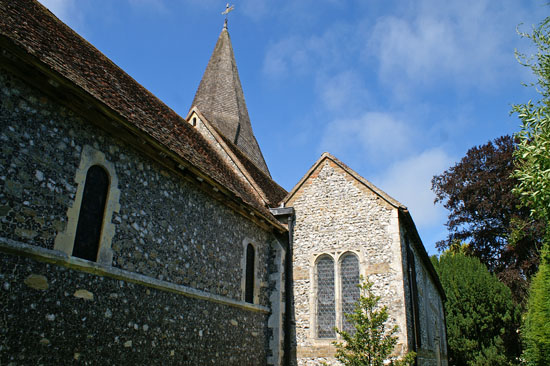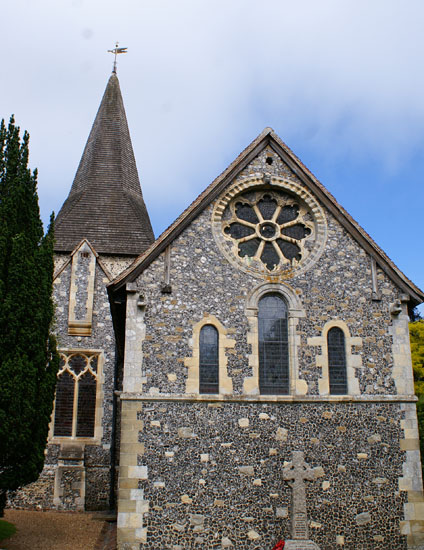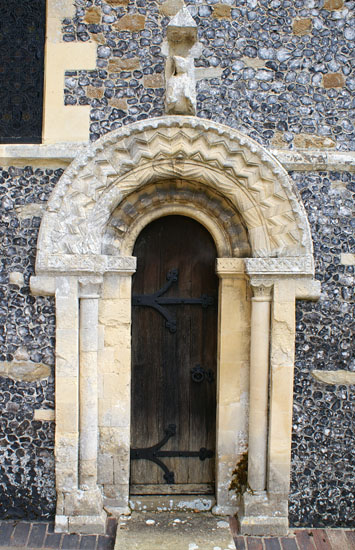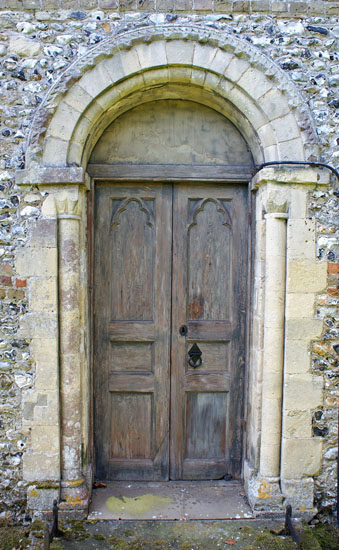|
Alphabetical List |
|
|
|
|
|
|
|
County List and Topics |
|
|
|
Please sign my Guestbook and leave feedback |
|
|
||||||||||||||||||||||
|
The plan of the Norman church would have comprised the nave and chancel, a south aisle and the tower. The south chapel that we see to the right of the south door (above) is a rebuilding of this part of the original Norman south aisle. The broach spire is, of course, a later addition. Not visible in this picture is the North aisle which was also not part of the Norman church. The tower, thus, was rather oddly placed to the south of the church with the aisle leading off on either side - although “lateral” towers of this period were rather more common in France, reinforcing the heavy French influence that we see in Romanesque churches in this part of Kent. Note that a tower is something that the more celebrated Barfreston cannot boast! It is the location of this tower and the existence of an unusually narrow south aisle (and aisles are not at all common in Norman churches) that encourages some experts to speculate that there was an earlier church here and that the existing one incorporated some of its plan. The glories of this pretty, quintessentially rural, church are its south doorway with its glorious (although sadly weathered) courses of fantastic decoration and tympanum; and the wheel window on the east end, a feature it shares with Barfreston. Simon Jenkins may give this church “only” two stars and without my own predilection for Norman architecture he is right to do so; but this a church that no enthusiast should pass by without a visit. |
|
|
||||||||||||||||||||
|
|
||||||||||||||||||||||||||||||||||||||||||||||||||||||||||||||||||||||||||||||||||||||||||||||||||||
|
The capitals on either side of the doorway are of stylised foliage with none of the knights and dragons that adorn those at Barfreston. |
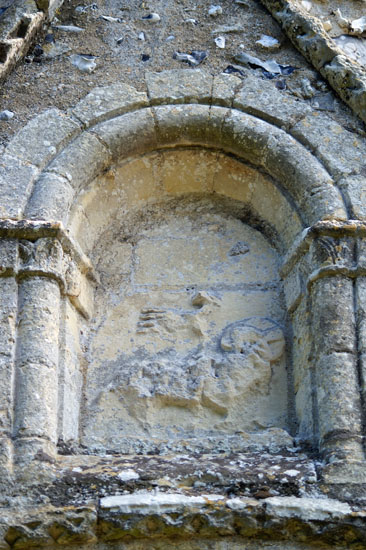 |
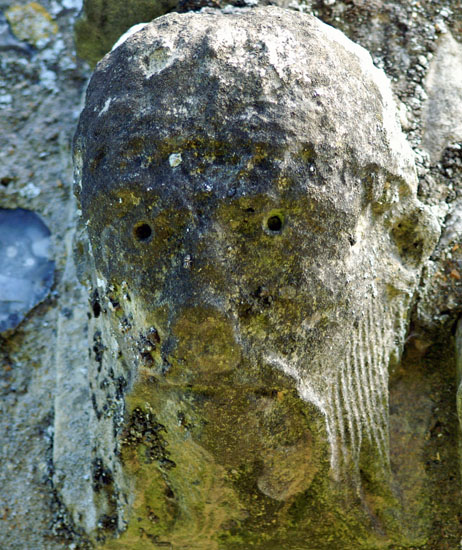 |
|
|
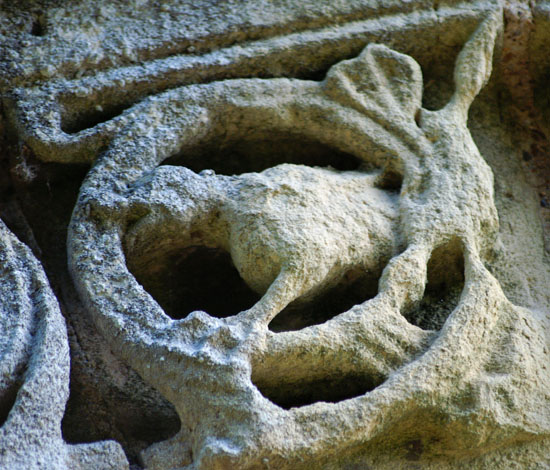 |
|||||
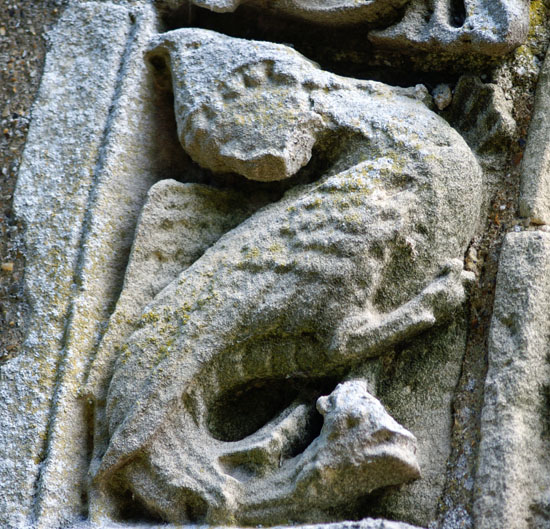 |
|||||
 |
|||||
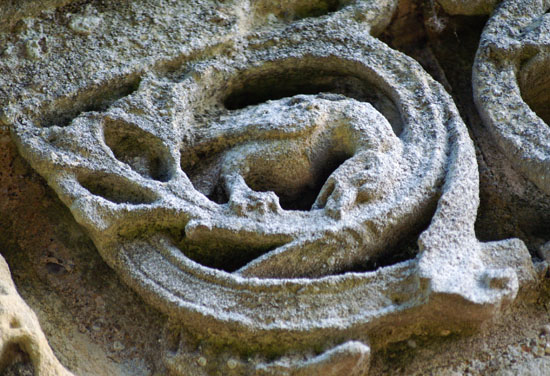 |
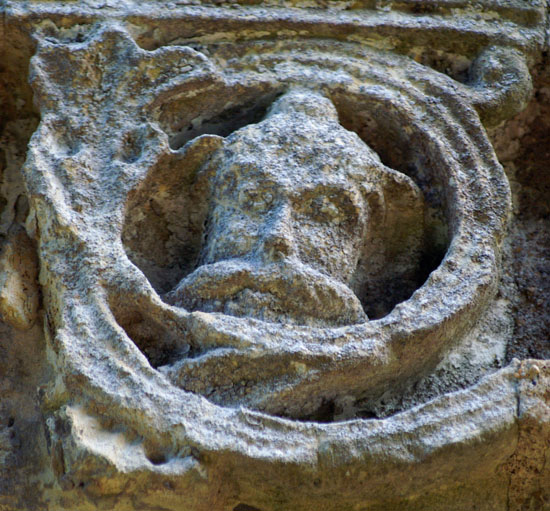 |
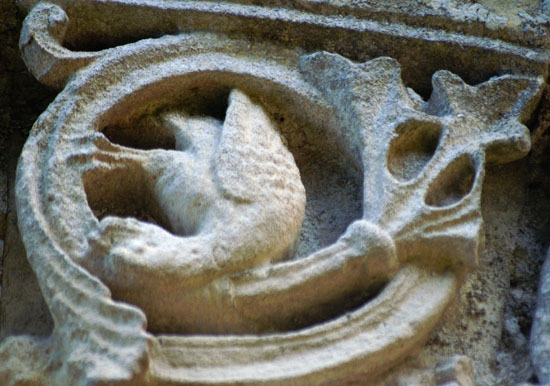 |
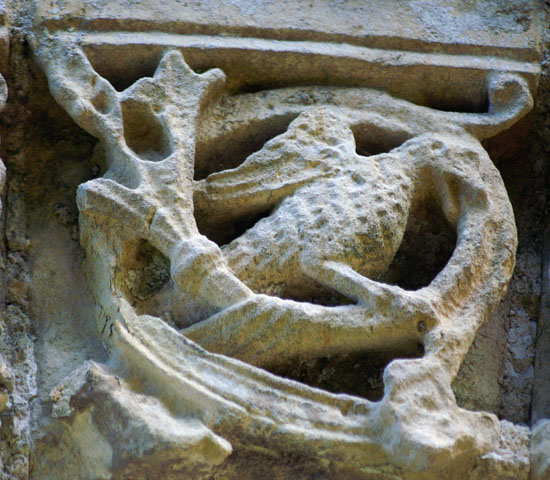 |
||
|
The individual shaped blocks of stone that comprise an arch are known as “voussoirs”. I imagine, but don’t know, that this derives from the French word “Voute” which means arch. At Patrixbourne there are five courses of voussoirs. The photographs above are examples of the outermost course. Each is a grotesque contained within a foliage surround. The one top left (bottom left on the voussoir itself) is an exception: it is rather larger than the rest and has no surround. It is a peculiar figure of a griffen apparently wearing a child’s or woman’s bonnet. Also different is (middle row right) what looks like it could be intended to be a human face. |
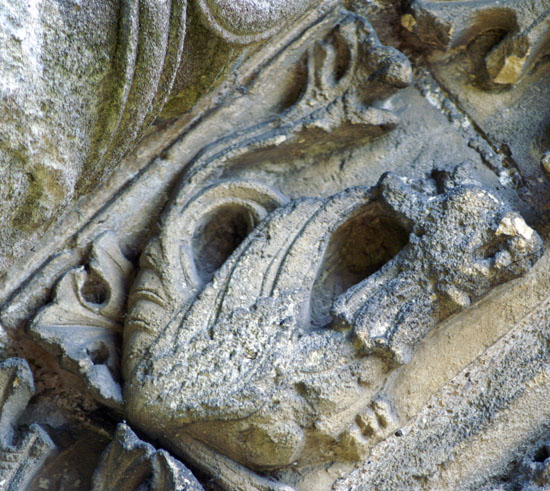 |
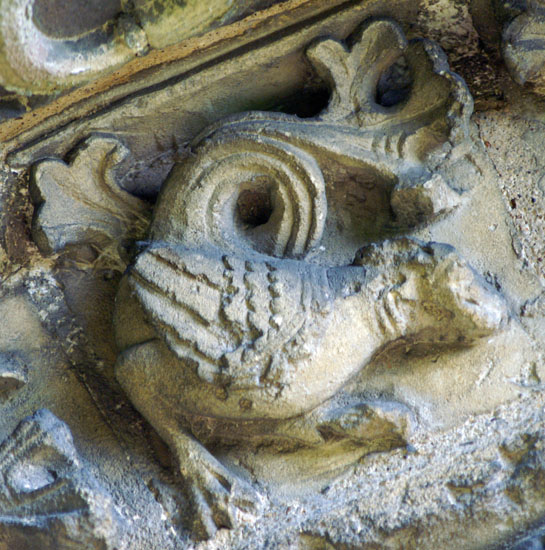 |
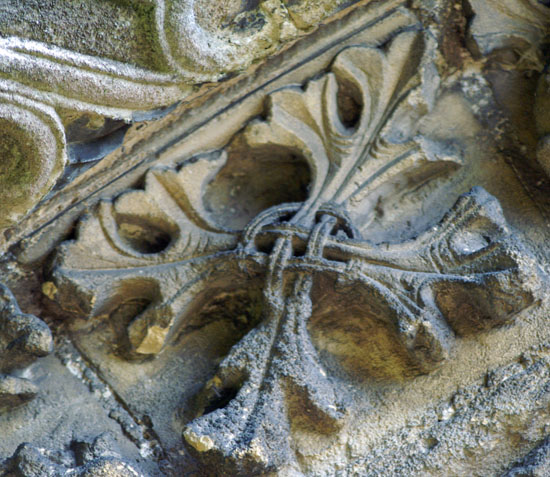 |
|||||||||||
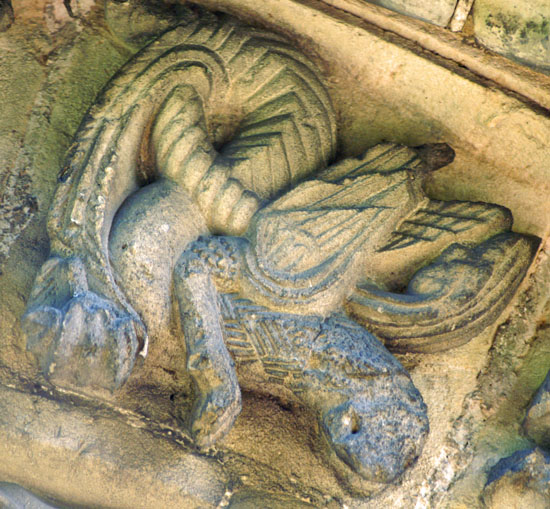 |
|||||||||||||
 |
|||||||||||||
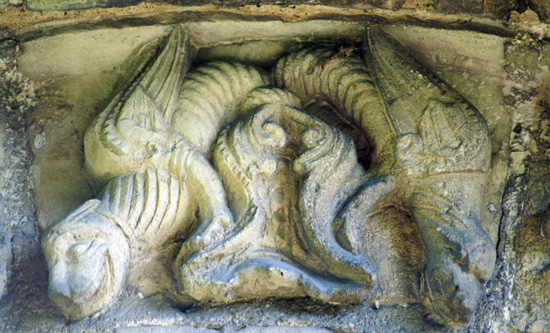 |
|||||||||||||
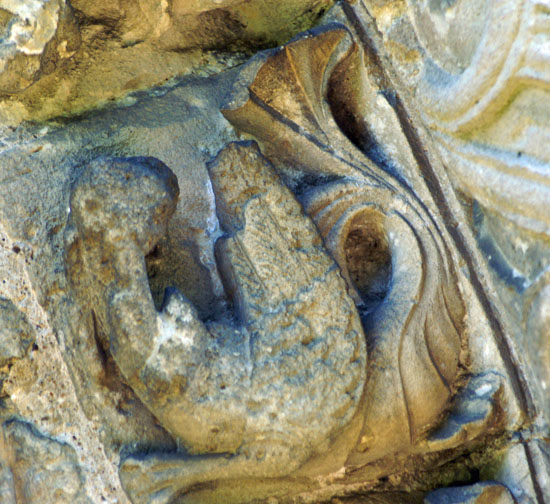 |
|||||||||||||
|
There is a second course of voussoirs with grotesques. Some of these are rather more distinctive and they lack the foliage surrounds that characterise the other course. They do, however, alternate with foliage carvings such as can be seen top row right - in this case with a rather nice “knotted” stem structure. Elsewhere we see what seems to be a rather cheery flying tortoise (middle row left) and what looks like some kind of demon. The best of them is perhaps the pair bottom left that occupy the central position in this course of voussoirs. |
|
|
||||||||||||||||||||||||||||||||||||||||||||||||||||||||||||||||||||||||
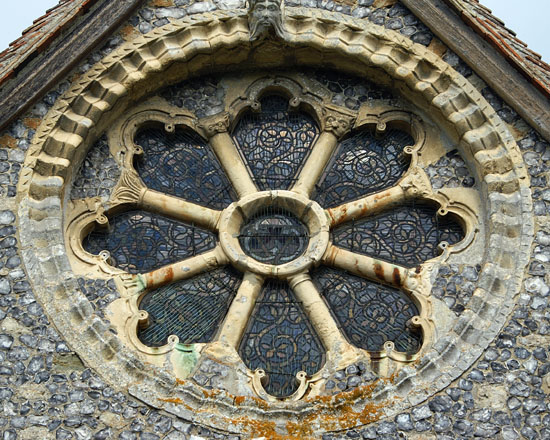 |
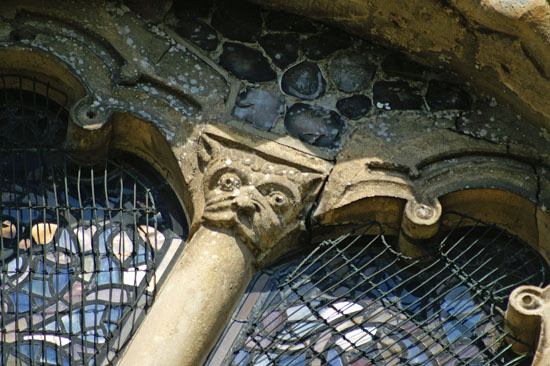 |
||||
|
The wheel window is a great rarity with only Barfreston and Castle Hedingham (Essex) having anything comparable. The spoke-eating grotesque heads are slightly smaller than at Barfreston but the cusped “wheel” is very similar. The decorative moulding here, however, is a circle of grotesques at Barfreston. |
|||||
|
At Patrixbourne there are only four “cat mask” grotesques whereas Barfreston has eight - one at each “spoke”. Despite these differences, the two wheel windows are strikingly similar and surely were the work of the same “school” of masons. |
|||||
|
|
|
||||||||||||||||||||||||||||||||||||
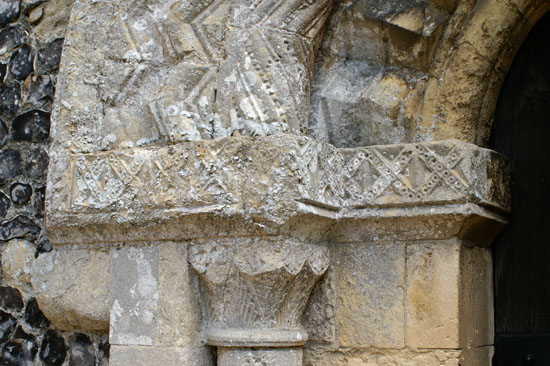 |
|||
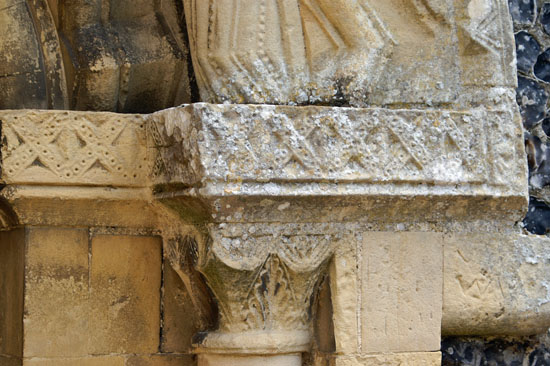 |
|||
|
Priest’s doors on Norman churches are rarely carved with grotesques - perhaps reflecting the “holiness” of the churchmen who used them. Many are very plain, but Patrixbourne’s is relatively ornate with elaborate courses of mouldings over the arch and these nicely-carved capitals with saltire designs and stylised foliage. |
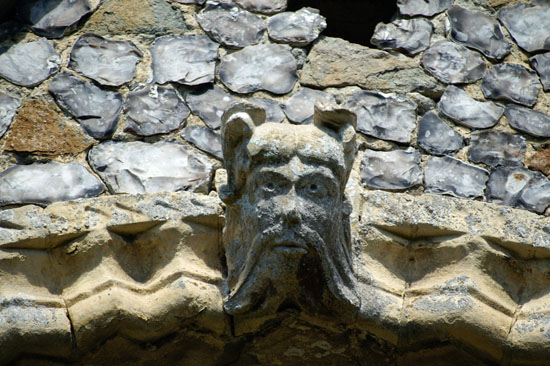 |
|||
 |
|||
|
|
|
Footnote |
|
We arrived at Patrixbourne at 10.30 am on a Sunday morning in June 2011. It was locked but we had only to wait for the churchwardens to open up for the traditional 11.00 service. Feeling rather “in the way” as church was prepared for the service, we hurried somewhat and that accounts for the dearth of interior pictures here - although, there is little of real note within. I knew it would happen one day, however.... We were aware as we took photographs that one of the churchwardens was a little agitated. I put this down to our having politely declined the offer to join the congregation for the morning. As we left, however, she hurried after us and demanded to know whether we were taking photographs for “commercial” reasons, in which case she felt that their cash-strapped church deserved a commercial-sized donation. I suppose that with our two cameras, a long zoom lens and having left a handful of “business” cards for this website with its “...co.uk” suffix it must have looked for all the world as if we there in order to write a book or make a TV program or something of that nature. I am not sure if she believed me, but if she ever reads this she can rest assured (as can all other readers) that this site is a labour of love from which I have never received a penny of income. Far from it, I spend inordinate amounts of my spare time on what I see as an advertisement for the English Parish Church - surely the biggest and best free show on earth? Please visit these churches - and Patrixbourne is worth travelling to see - make a small donation, buy the Church Guides on offer and maybe even a postcard or tea towel or two and help these good people in their wearisome and endless task of maintaining these incredible historic buildings with no state support. |

